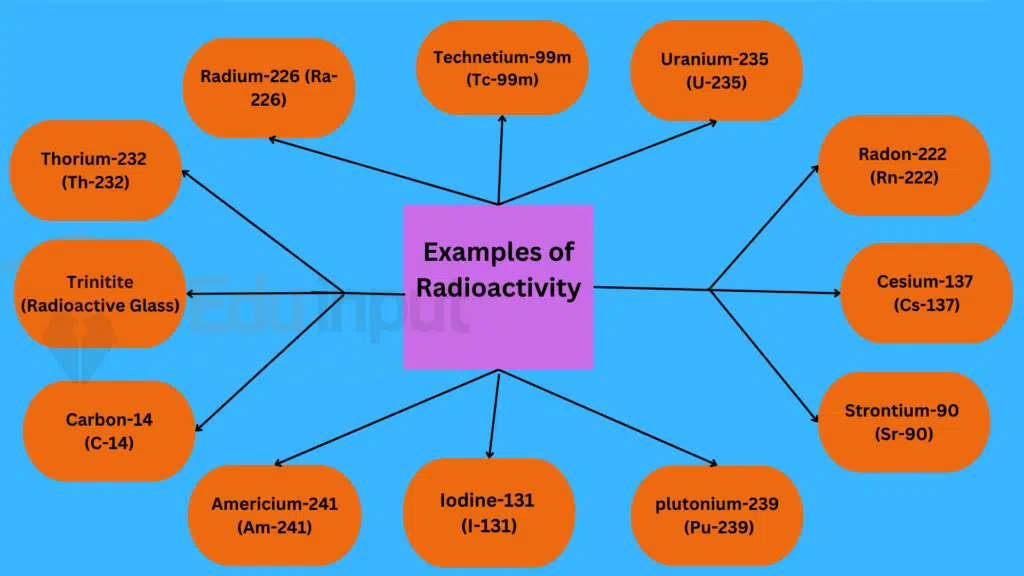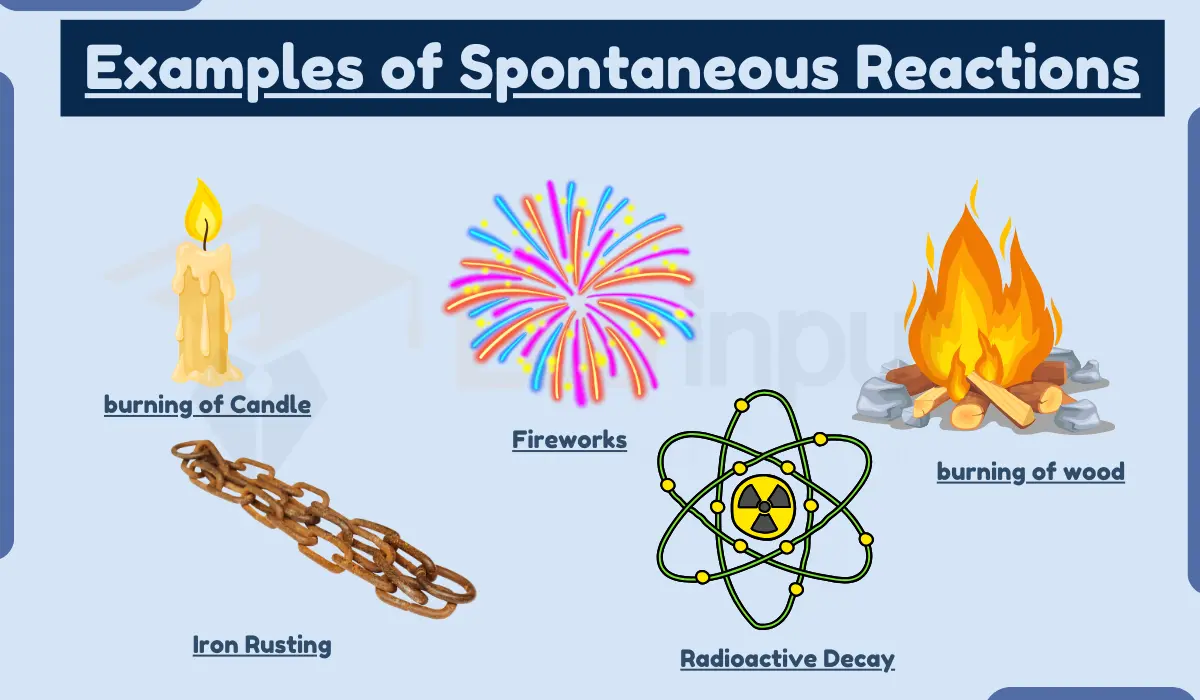15 Examples of Radioactivity
Radioactivity is a phenomenon where unstable atomic nuclei undergo spontaneous decay, emitting radiation in the process. Discovered by scientists such as Henri Becquerel and Marie Curie, radioactivity has diverse applications and implications across various fields. In this article, we’ll delve into 15 different examples of radioactivity, shedding light on their uses, risks, and contributions to scientific understanding.
Examples of Radioactivity
Here are 15 Examples of Radioactivity:

1. Uranium-235 (U-235)
Uranium-235 is a naturally occurring radioactive isotope found in uranium ores. It is widely known for its role in nuclear power generation and as a key component in the production of nuclear weapons.
2. Radon-222 (Rn-222)
Radon-222 is a radioactive gas formed through the decay of uranium and thorium. It is a significant concern for indoor air quality as prolonged exposure can lead to lung cancer.
3. Cesium-137 (Cs-137)
Cesium-137 is a byproduct of nuclear fission in reactors and nuclear weapons. It has applications in medical treatments and is also used as a radiation source in industrial gauges.
4. Strontium-90 (Sr-90)
Strontium-90 is a radioactive isotope produced in nuclear reactors. It poses health risks due to its similarity to calcium, accumulating in bones and potentially causing bone cancer.
5. Plutonium-239 (Pu-239)
Plutonium-239 is a fissile material used in nuclear reactors and weapons. It is a key component in the production of nuclear fuel and has strategic importance.
6. Iodine-131 (I-131)
Iodine-131 is a radioactive isotope used in medical treatments for thyroid disorders. It is also a fission product in nuclear reactors and has implications in nuclear accidents.
7. Americium-241 (Am-241)
Americium-241 is produced in nuclear reactors and is used in smoke detectors due to its alpha particle emissions, which can ionize air and trigger an alarm.
8. Carbon-14 (C-14)
Carbon-14 is a radioactive isotope used in radiocarbon dating to determine the age of ancient artifacts and fossils. It is formed in the atmosphere through cosmic ray interactions with nitrogen.
9. Trinitite (Radioactive Glass)
Trinitite is a glassy material created during the first nuclear test in 1945 (Trinity test). It serves as a historical artifact of nuclear testing.
10. Thorium-232 (Th-232)
Thorium-232 is a naturally occurring radioactive element used as a nuclear fuel. It has potential applications in advanced nuclear reactor designs.
11. Radium-226 (Ra-226)
Radium-226 is a decay product of uranium and thorium. It was once used in luminescent paint for watches and instruments, though its use has declined due to its radioactive nature.
12. Neptunium-237 (Np-237)
Neptunium-237 is produced in nuclear reactors and has applications in the production of plutonium-238, which is used in certain types of batteries.
13. Technetium-99m (Tc-99m)
Technetium-99m is a radioactive isotope used in medical imaging procedures, particularly in nuclear medicine scans.
14. Polonium-210 (Po-210)
Polonium-210 is a highly radioactive element and is known for its association with the poisoning of Alexander Litvinenko in 2006.
15. Beta Decay in Potassium-40 (K-40)
Potassium-40 undergoes beta decay, contributing to the natural background radiation. It is present in potassium-containing foods and the human body.




Leave a Reply